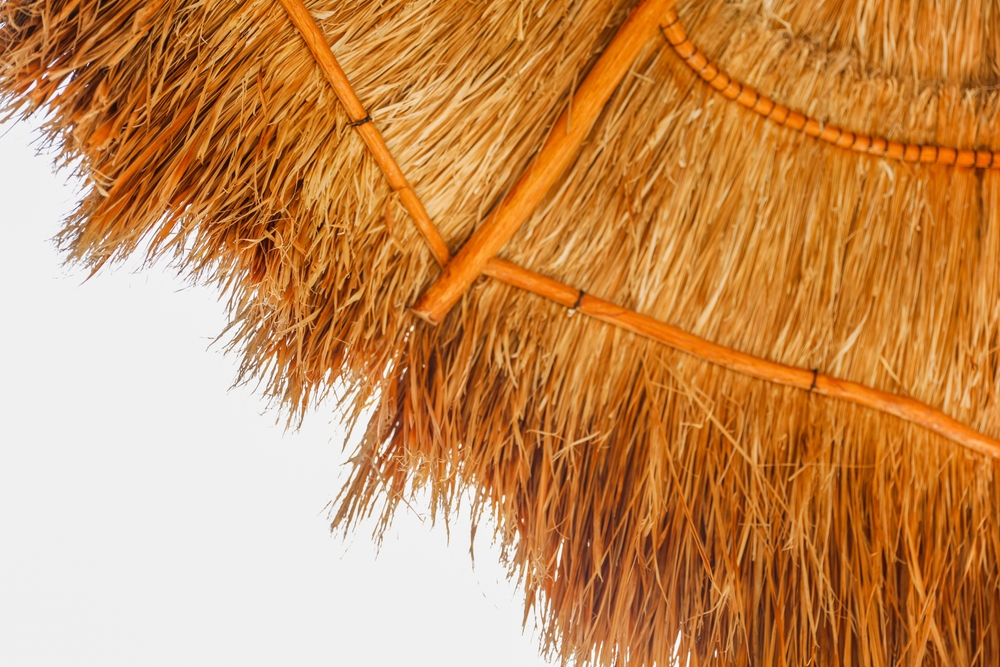The Durability and Longevity of Natural Palapa vs Synthetic Palapa

Palapas, with their traditional thatched roofs, are a hallmark of tropical and coastal architecture. These iconic structures have been used for centuries to provide shade and shelter in warm climates. While the palapa roof has always been made of natural materials, modern advancements have introduced synthetic alternatives that aim to mimic the look and function of traditional palapas. When considering a palapa for your property, whether for a backyard retreat or as part of a commercial space, understanding the differences in durability and longevity between natural and synthetic palapas is crucial. This article will delve into the factors that affect the lifespan of both types of palapas and help you decide which one is right for your needs, especially in areas like Sacramento, CA, where extreme weather conditions play a role in material choice.
Natural Palapas: Traditional Appeal and Limited Durability
Natural palapas are constructed from materials such as palm fronds, grass, bamboo, and other organic materials that are readily available in tropical and subtropical regions. These materials have been used for generations because of their availability, flexibility, and ability to provide effective shade and shelter from the sun. The aesthetic appeal of a natural palapa lies in its rustic, authentic appearance that complements the natural surroundings.
However, when it comes to durability, natural palapas face several challenges. One of the most significant drawbacks of natural materials is their susceptibility to the elements. Over time, palm fronds and other thatching materials can begin to degrade due to exposure to moisture, UV rays, and harsh weather conditions. In places like Sacramento, CA, where the climate includes hot summers and occasional heavy rains, natural palapas may require frequent maintenance or replacement to ensure they continue to provide adequate protection.
The lifespan of a natural palapa depends largely on the materials used and the quality of construction. With proper care, including regular inspections, cleaning, and repairs, a well-built natural palapa can last between 5 to 10 years. However, without the proper maintenance, the roof may begin to show signs of wear and tear much sooner. Palm fronds, for example, can begin to fade, fray, and lose their structural integrity, especially under the intense sun of hot climates. The longevity of a natural palapa also varies depending on the specific environment, as areas with higher humidity or saltwater exposure can accelerate the deterioration of organic materials.
Synthetic Palapas: Modern Durability and Longevity
In recent years, synthetic palapas have gained popularity, especially among homeowners and business owners who want the aesthetic of a traditional palapa but with enhanced durability and reduced maintenance. Synthetic materials used to construct palapas often mimic the appearance of natural thatching while providing a longer-lasting solution. These synthetic materials are typically made from plastics, resins, and other engineered substances designed to withstand the harshest weather conditions.
One of the primary benefits of synthetic palapas is their resistance to the elements. Unlike natural materials, which can rot, fade, or deteriorate when exposed to moisture and UV rays, synthetic materials are designed to be UV-resistant, waterproof, and fire-retardant. This means that synthetic palapas are better equipped to withstand the extremes of weather, from intense sun exposure to heavy rain and even snow. In regions like Sacramento, CA, where temperatures can fluctuate widely, synthetic palapas offer an excellent solution for long-term durability.
The lifespan of a synthetic palapa is significantly longer than that of a natural palapa. A well-constructed synthetic palapa can last anywhere from 15 to 25 years or more, depending on the quality of the materials and the installation. This longevity makes synthetic palapas a cost-effective investment in the long run, as they require far less maintenance and upkeep than their natural counterparts. They are also less prone to damage from pests, such as termites, which can be a common issue with natural thatched roofs.
Maintenance Considerations for Natural and Synthetic Palapas
When it comes to maintenance, natural and synthetic palapas have vastly different needs. As mentioned earlier, natural palapas require regular upkeep to maintain their appearance and functionality. The palm fronds and other thatching materials may need to be replaced or repaired every few years, especially if the roof has been exposed to extreme weather conditions. In addition, natural palapas are susceptible to the growth of mold and mildew, which can be problematic in humid climates. Regular cleaning, including washing and drying the thatch, can help prevent mold and mildew buildup. However, even with the best care, natural materials will inevitably degrade over time.
On the other hand, synthetic palapas require far less attention. Their resistance to UV rays and moisture means that they are less likely to degrade, fade, or develop mold and mildew. Typically, the most maintenance you’ll need for a synthetic palapa is occasional cleaning to remove dust, leaves, or debris. Some synthetic palapas may also need to be inspected for damage after particularly severe storms or high winds. However, compared to the upkeep required for natural palapas, synthetic options are much more low-maintenance, making them a more convenient choice for those who do not want to spend time or money on frequent repairs.
For those in need of construction services in Sacramento, CA, choosing a synthetic palapa can reduce the need for frequent service calls or repairs, offering a more reliable solution for long-term outdoor structures.
Aesthetic Considerations and Environmental Impact
While the durability and longevity of synthetic palapas are notable advantages, many homeowners still opt for natural palapas because of the aesthetic charm they bring. The rustic, organic look of natural thatching can evoke a sense of tropical paradise, making it the perfect choice for those who want an authentic, eco-friendly structure. Natural palapas are also often considered to be more environmentally friendly, as the materials used are biodegradable and come from renewable resources.
On the other hand, synthetic palapas, while durable and practical, may lack the same natural charm as their traditional counterparts. Some people may feel that synthetic materials look less authentic and can detract from the natural beauty of the surrounding environment. Additionally, the production of synthetic materials can involve the use of chemicals and energy-intensive processes, which may have a higher environmental cost than using locally sourced natural materials.
That said, many synthetic palapas are designed to closely mimic the appearance of natural thatching, and advancements in material technology continue to improve the realism of synthetic options. This allows homeowners to enjoy the benefits of durability and low maintenance while still maintaining an attractive, palapa-like look. For those prioritizing both longevity and aesthetics, synthetic palapas can offer a balanced solution that meets their needs.
Choosing the Right Palapa for Your Needs
When deciding between a natural or synthetic palapa, it’s essential to consider your specific needs and preferences. If you are located in an area like Sacramento, CA, where weather conditions can vary dramatically, a synthetic palapa may offer a more practical and long-lasting option. The added durability and resistance to the elements will help ensure that your palapa continues to provide shade and shelter for years without the need for constant upkeep.
However, if you value authenticity and the traditional appeal of a natural structure, a natural palapa may be the right choice for you. Just be prepared for regular maintenance and potential repairs over time. Ultimately, the decision between a natural or synthetic palapa comes down to your priorities—whether you value authenticity and natural materials or the longevity and minimal upkeep of synthetic options.
For those seeking construction services in Sacramento, CA, professional builders can help assess your specific needs and guide you in choosing the best palapa option for your property. Whether you go with a natural or synthetic palapa, working with experienced professionals will ensure that your outdoor structure is built to withstand the test of time and the elements.
Conclusion
Both natural and synthetic palapas have their benefits and drawbacks when it comes to durability and longevity. While natural palapas offer an authentic aesthetic and environmental appeal, they require more maintenance and may not last as long as synthetic alternatives. Synthetic palapas, on the other hand, provide greater durability, require less maintenance, and offer a longer lifespan, making them an excellent option for those seeking a hassle-free, long-term solution. Whichever option you choose, understanding the factors that affect durability and longevity will help you make an informed decision that best suits your needs and preferences.
Need All-Inclusive Construction Services Near You?
Here at Palapa Pros-Landscape Construction, we’re here to turn your dream backyard or home improvement project into reality. Whether it’s a custom Palapa, a sleek BBQ island, stunning granite or quartz surfaces, or a full landscaping transformation, we’ve got you covered. Our skilled team brings quality, elegance, and a touch of fun to every project—big or small. Ready to create the perfect outdoor living space or upgrade your kitchen or bathroom? Reach out to us today, and let’s start designing something amazing together. We stand behind every job with pride and integrity!
